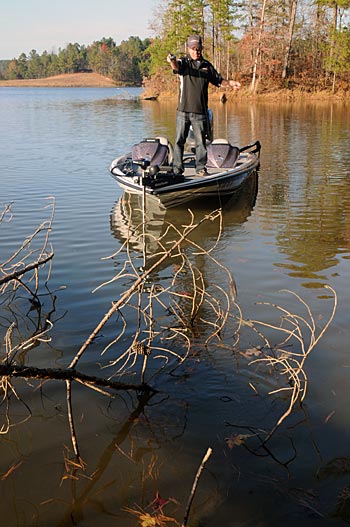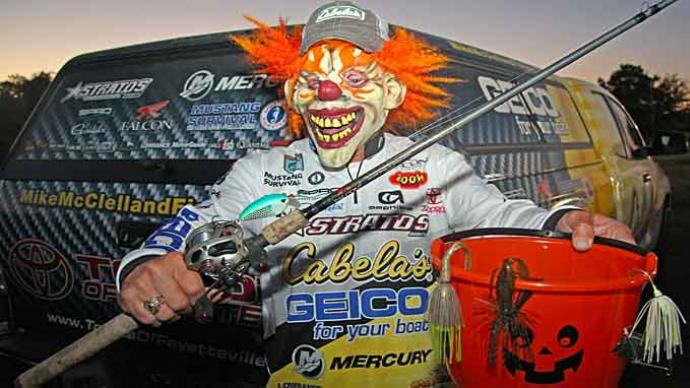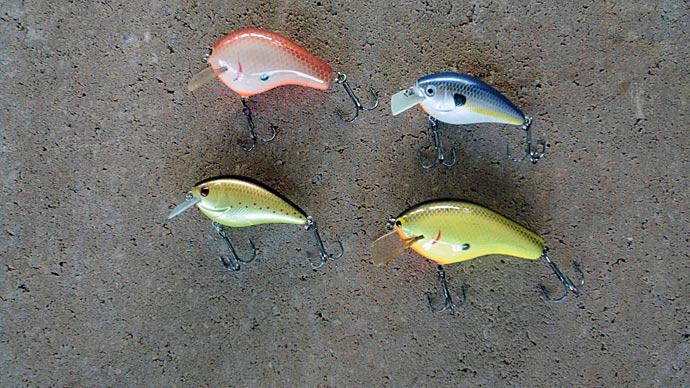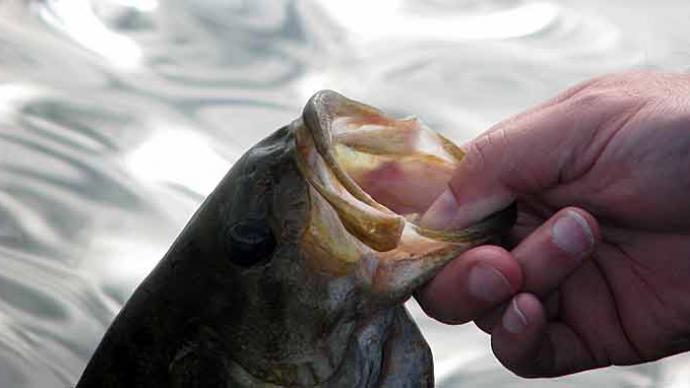
Power and finesse fishing come into play in the fall when bass are either super aggressive or extremely picky.
Cooler air and water temperatures drive bass out of their summer doldrums and trigger a fall feeding fest, but cold fronts, turnover, and heavy fishing pressure from tournament championships tend to turn off autumn bass. The wide range of tactics that produce bass in the fall makes it essential for anglers to use the right rods, reels, and lines for each technique they need to employ throughout the season.
Pro anglers depend on various degrees of speed and power for fall bass tactics and realize reels with particular gear ratios deliver optimal performances from their lures. Some fall tactics, such as waking a spinnerbait or burning a square-bill crankbait, require a high-speed baitcast reel with a gear ratio of 7.1:1 or higher while cranking deep-diving plugs need the power generated from lower-speed reels with 5.4:1 or 6.4:1 gear ratios. The most common gear ratios on spinning reels used for fall finesse fishing are 5.4:1 or 6.2:1.
Rod manufacturers produce numerous models loaded with sensitivity, casting power, and hook-setting power to catch fish in any fall situation. With so many choices on the market, the dilemma for the average angler becomes which rod to choose for each fall tactic. The decision should be based on which rod length, power, and action best suits each particular technique the angler will employ.

Learning the power and action of rods is the first step in determining which rod to use for various fall applications. Power is the amount of pressure an angler has to apply to make a rod bend. A medium power rod is usually rated to accommodate 1/4- to 3/4-ounce lures and 8- to 14-pound test line. Action describes where the rod bends when pressure or weight is applied to the rod. A fast action rod, such as a flipping stick, bends closer to the tip when under pressure, whereas a cranking rod with a slow action bends down nearly to the first or second guide from the reel seat.
The most popular rod lengths for fall tactics range from 6 1/2- to 7 feet for spinning models and 7- to 8 feet for casting rods.
Braid, fluorocarbon, and monofilament lines are all needed for the various fall tactics to catch bass. Fluorocarbon's low visibility qualities make it the perfect line for clear-water situations. Monofilament has more stretch than fluorocarbon or braid, so it is ideal for running square-bill crankbaits through wood because the extra stretch in the line helps deflect the lure when the crankbait bangs into the cover. Braided line is the best choice for penetrating lures through matted vegetation and winching bass out of heavy cover.
Various line sizes are needed for different fall techniques. Line choices for fall fishing range from 15 to 25-pound test for power tactics to 6- or 8-pound test for fishing with finesse lures.
Here are rod, reel, and line match-ups for the various lures and techniques to catch aggressive and inactive bass throughout the fall.
- Topwater plugs: 6-foot, 4-inch to 6-foot, 8-inch, medium power, fast action casting rod; 7.1:1 or higher gear ratio baitcast reel and 14- to 17-pound monofilament line.
- Buzz baits: 6-4 to 7-foot, medium power, fast action casting rod; 7.1:1 to 10.1:1 baitcast reel and 17- to 25-pound monofilament or 30- to 50-pound braid.
- Spinnerbaits: 6-4 to 7, medium power, fast action casting rod; 6.4:1 to 7.1:1 baitcast reel and 17- to 25-pound fluorocarbon line.
- Lipless and square-bill crankbaits: 7- to 8-foot, medium power, moderate action fiberglass casting rod; 6.4:1 to 7.1:1 baitcast reel and 17- to 25-pound monofilament line.
- Medium-diving crankbaits: 7- to 7 1/2-foot, medium power, moderate action fiberglass casting rod; 6.4:1 baitcast reel for crankbaits running down to 12 feet and 10- to 12-pound monofilament or fluorocarbon line.
- Deep-diving crankbaits: 7-3 to 8-foot, medium-heavy power and moderate-fast action casting rod; 5.4:1 baitcast reel and 10- to 14-pound monofilament or fluorocarbon line.
- Flipping and punching weed mats: 7 1/2 to 7-11, heavy to extra-heavy power and fast or extra-fast action casting rod; 7.1:1 to 10.1:1 baitcast reel and 20- to 25-pound fluorocarbon for wood cover or 50- to 65-pound braid for matted vegetation.
- Pitching jigs and soft plastics: 7 to 7-3, medium to medium-heavy power, fast to extra-fast action casting rod: 7.1:1 to 10.1:1 baitcast reel, and 15- to 20-pound test fluorocarbon.
- Carolina rig: 7 to 7 1/2, medium to medium-heavy power, fast action casting rod; 6.4:1 to 8.1:1 baitcast reel and main line of 15- to 20-pound fluorocarbon or 20- to 30-pound braid and a leader of 8- to 12-pound fluorocarbon.
- Swimbaits: 7 1/2, medium-heavy (for hollow-belly models) and medium-heavy or heavy (for hard plastic models), fast action casting rod, 5.4:1 baitcast reel and 17- to 20-pound fluorocarbon for soft plastic swimbaits or 30- to 50-pound braid for hard plastic models.
- Drop shot rigs: 6-10 to 7, medium power, moderate to fast action spinning rod; 5.4:1 or 6.2:1 spinning reel and 10- to 14-pound braid main line and 6- to 8-pound fluorocarbon leader.
- Tube baits and shaky head finesse worms: 6-10 to 7, medium-heavy, fast action spinning rod; 6.2:1 spinning reel and main line of 10- to 30-pound braid and leader of 8- to 12-pound fluorocarbon.




